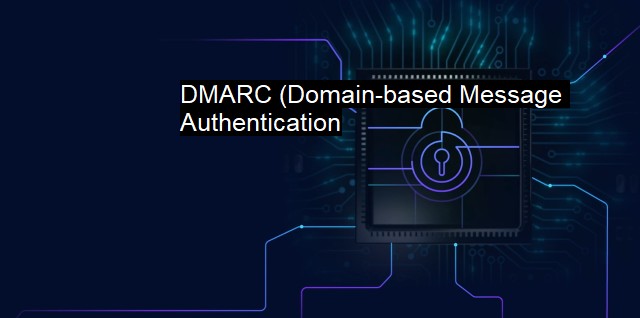What is DMARC (Domain-based Message Authentication?
Enhancing Email Security with DMARC: Preventing Phishing and Cyberattacks through Authentication and Verification Protocols
Domain-based Message Authentication, Reporting and Conformance, commonly known as DMARC, is a protocol that uses DomainKeys Identified Mail (DKIM) and Sender Policy Framework (SPF) to help protect email senders and recipients from spam, phishing, and spoofing. It acts as a valuable framework for email authentication, ensuring that genuine communication is protected while eliminating bogus messages. DMARC is widely employed in the context of cybersecurity and antivirus applications due to the incredible measure of protection it provides for email data.DMARC is a powerful tool created to help email senders and receivers verify that the emailed message actually comes from where it claims to originate. This is done by aligning messages with previously established DKIM and SPF standards. With this email authentication system, it's easier to protect domains from illegitimate use, such as phishing scams and spam. Phishing is fraudulent behavior where criminals attempt to duplicate a reputable email to deceive customers into revealing personal information like credit card numbers and passwords. By utilizing DMARC, email receivers can check that incoming email is genuine, increasing trust in email ecosystems.
DMARC is crucial in the context of cybersecurity for several reasons. It guards against malicious agents who aim to misrepresent an email sender's identity, which is an increasingly common issue on the internet. Cybersecurity is a growing concern worldwide, and DMARC's contributions to securing email and online communications can't be overstated.
DMARC reports provide the sender with insight into who is sending email on their behalf, what is being done with messages, and which ones are not passing DMARC authentication. Senders can monitor the deployment using these reports, spot potential issues, target areas that need adjustment, ensuring emails reach their receivers, and thus enhancing the efficiency and security of communication.
Adding to the impressive functionalities, DMARC plays a vital role in an organization's reputation. Failing to execute validation processes indicates that the organization has a weaker security posture, causing potential damage to its credibility. But following DMARC policies depicted as responsible, adding a level of trust in the organization, and ensuring that classified or important emails are well protected against fraudulent activities.
DMARC protocol, rooted in Sender Policy Framework and DomainKeys Identified Mail, helps protect a domain from being used for sending fraudulent emails, minimizing significant cyber threats. SPF empowers the domain owners to define which mail servers they will use to send email from their domain. Conversely, DKIM provides an encryption key and digital signature that verifies that the email message was not altered in transit.
The combination of SPF and DKIM within the DMARC framework gives us a two-fold verification technique resulting in a deeper level of security. If both SPF and DKIM checks fail, DMARC provides guidelines to the email receiver about how to handle the unauthenticated messages using a ‘policy’.
While many organizations already use SPF and DKIM, DMARC adds an additional layer of security and reporting that allows senders to specify how receivers should treat messages that fail the authentication tests. This increased control protects trusted communication routes, reduces phishing and spam opportunities and allows organizations to monitor and improve their email security.
DMARC is an essential tool for improving email deliverability and security. It allows an organization to protect its communication channels, maintain its online reputation and secure itself against cyber threats. Notably, the world of cybersecurity and domain email often falls prey to malicious entities. the DMARC protocol stands as an effective bulwark, helping to ensure that emails remain a practical and secure communication method in today's digital age.

DMARC (Domain-based Message Authentication FAQs
What is DMARC?
DMARC stands for Domain-based Message Authentication, Reporting, and Conformance. It is an email validation system designed to give domain owners the ability to protect their domain from unauthorized use, such as phishing and email spoofing.How does DMARC work?
DMARC works by allowing domain owners to specify which email authentication methods are in use for their domain, and how they want non-compliant email messages to be handled. It uses two other email authentication methods, SPF and DKIM, to validate emails and ensure they are from authentic sources.Why is DMARC important in cybersecurity?
DMARC is important in cybersecurity because it helps prevent fraudulent email attacks, such as phishing and email spoofing, which are commonly used by cybercriminals to steal sensitive information or infect systems with malware. DMARC can also provide insight into how and where these attacks are being carried out, allowing companies to take the necessary steps to mitigate future attacks.Is DMARC a replacement for antivirus software?
No, DMARC is not a replacement for antivirus software. While DMARC can help prevent unauthorized use of a domain by validating emails and blocking fraudulent messages, it does not protect against viruses or other types of malware that may be contained within an email attachment or link. Antivirus software is still necessary to protect against these types of threats.| | A | | | B | | | C | | | D | | | E | | | F | | | G | | | H | | | I | | | J | | | K | | | L | | | M | |
| | N | | | O | | | P | | | Q | | | R | | | S | | | T | | | U | | | V | | | W | | | X | | | Y | | | Z | |
| | 1 | | | 2 | | | 3 | | | 4 | | | 7 | | | 8 | | |||||||